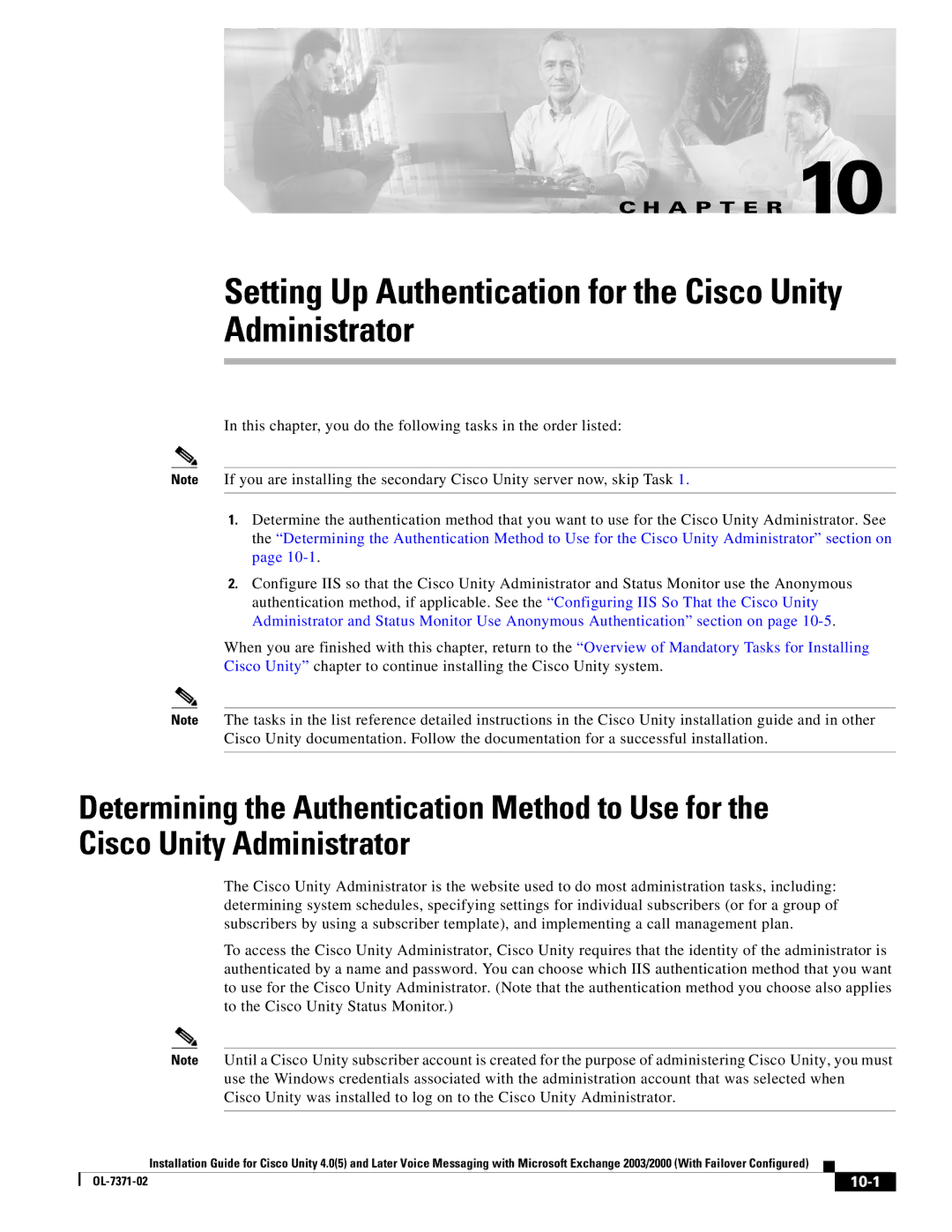
C H A P T E R 10
Setting Up Authentication for the Cisco Unity Administrator
In this chapter, you do the following tasks in the order listed:
Note If you are installing the secondary Cisco Unity server now, skip Task 1.
1.Determine the authentication method that you want to use for the Cisco Unity Administrator. See the “Determining the Authentication Method to Use for the Cisco Unity Administrator” section on page
2.Configure IIS so that the Cisco Unity Administrator and Status Monitor use the Anonymous authentication method, if applicable. See the “Configuring IIS So That the Cisco Unity Administrator and Status Monitor Use Anonymous Authentication” section on page
When you are finished with this chapter, return to the “Overview of Mandatory Tasks for Installing Cisco Unity” chapter to continue installing the Cisco Unity system.
Note The tasks in the list reference detailed instructions in the Cisco Unity installation guide and in other Cisco Unity documentation. Follow the documentation for a successful installation.
Determining the Authentication Method to Use for the Cisco Unity Administrator
The Cisco Unity Administrator is the website used to do most administration tasks, including: determining system schedules, specifying settings for individual subscribers (or for a group of subscribers by using a subscriber template), and implementing a call management plan.
To access the Cisco Unity Administrator, Cisco Unity requires that the identity of the administrator is authenticated by a name and password. You can choose which IIS authentication method that you want to use for the Cisco Unity Administrator. (Note that the authentication method you choose also applies to the Cisco Unity Status Monitor.)
Note Until a Cisco Unity subscriber account is created for the purpose of administering Cisco Unity, you must use the Windows credentials associated with the administration account that was selected when Cisco Unity was installed to log on to the Cisco Unity Administrator.
Installation Guide for Cisco Unity 4.0(5) and Later Voice Messaging with Microsoft Exchange 2003/2000 (With Failover Configured)
|
|
|
|
|
|
